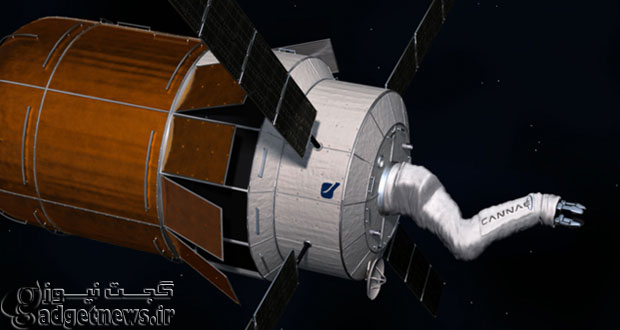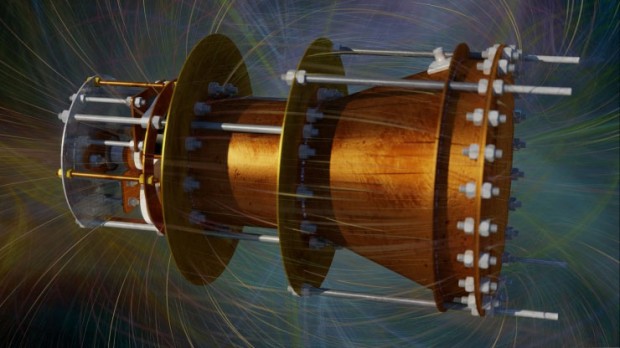یکی از بزرگتربن مشکلات انسان برای انجام سفرهای فضایی سوخت موتور فضا پیماهایی است که امروزه از آنها استفاده می شود.سوخت مصرفی در این گونه موتور ها ( نظیر موتور هواپیما ) در مقایسه با باری که جابهجا میکنند بسیار زیاد است و در نتیجه باعث افزایش هزینهها و کاهش شدید بازه مسافتی آنها میشود.چنین مشکلی باید تا قبل از ارسال انسان به مریخ حل شود و گرنه چنین سفرهای دور و درازی مطمئنا با مشکلاتی در حین سفر روبرو خواهند شد.
یکی از روشهایی که برای حل این مشکل پیشنهاد شده است استفاده از دستگاهی به نام رانشگر مایکروویو است. یکی از دانشمندان بریتانیایی به نام راجر شاویر توانست سال 2003 انجینی را با نام EmDrive طراحی کند که از همین متد در آن بهره گرفته شده است. در سال 2009 دانشمندان چینی نیز در تأیید تحقیقات شاویر چنین انجینی را تولید کردند، اما جامعه مهندسین چنین اختراعاتی را باور نداشتند چون عملا ساخت این دستگاه برخلاف یکی از مشهورترین قوانین فیزیک یعنی قانون بقای مومنتوم بود. این قانون در ساخت موتور جت کاربرد بسیاری دارد.
امروز برای بار سوم چنین دستگاهی تولید شده تا دنیا توجه بیشتری به این دستگاه و متد به کار گرفتهشده در آن داشته باشد. تحقیق جدید توسط دانشمندان ناسا انجام گرفته و طی یک کنفرانس در هفته گذشته برای جامعه علمی رونمایی شد.
دستگاه رانشگر مایکروویو ناسا نام Cannae Drive به خود گرفته است. در این دستگاه (موتور) یک مگنترون وظیفه تولید مایکروویوهایی را در درون یک محفظه کاملا بسته و ضمیمهشده به دستگاه بر عهده دارد که با آزاد شدن آن باعث تولید رانش برای دستگاه میشود. در نتیجه هیچ نیازی به سوخت نخواهد بود!
این مایکروویوها نیز به وسیله الکتریسیته که از طریق انرژی خورشیدی قابلتولید است، به راحتی تأمین خواهد شد. در تئوری وجود این دستگاه بدین معنی خواهد بود که علاوه بر عدم نیاز به سوخت، کارایی دستگاه تا ابد ادامه خواهد داشت، مگر اینکه مشکلی در سختافزار موتور ایجاد شود!
دستگاه کنونی ناسا یک مدل کاملا اولیه و بسیار کوچک است، اما اگر نمونههای بزرگتر آن تولید شود، سفرهای فضایی در کمترین زمان امکانپذیر خواهد شد؛ به عنوان مثال سفر به مریخ تنها چند هفته به طول خواهد انجامید!
منبع : theverge
NASA tested an impossible space engine and it somehow worked
NASA tested an impossible space engine and it somehow worked
NASA has been testing new space travel technologies throughout its entire history, but the results of its latest experiment may be the most exciting yet — if they hold up. Earlier this week at a conference in Cleveland, Ohio, scientists with NASA’s Eagleworks Laboratories in Houston, Texas, presented a paper indicating they had achieved a small amount of thrust from a container that had no traditional fuels, only microwaves, bouncing around inside it. If the results can be replicated reliably and scaled up — and that’s a big “if,” since NASA only produced them on a very small scale over a two-day period — they could ultimately result in ultra-light weight, ultra fast spacecraft that could carry humans to Mars in weeks instead of months, and to the nearest star system outside our own (Proxima Centurai) in just about 30 years.
The type of container NASA tested was based on a model for a new space engine that doesn’t use weighty liquid propellant or nuclear reactors, called a Cannae Drive. The idea is that microwaves bouncing from end-to-end of a specially designed, unevenly-shaped container can create a difference in radiation pressure, causing thrust to be exerted toward the larger end of the container. A similar type of technology called an EmDrive has been demonstrated to work in small scale trials by Chinese and Argentine scientists.
While the amount of thrust generated in these NASA’s tests was lower than previous trials — between 30 and 50 micronewtons, way less than even the weight of an iPhone, as Nova points out — the fact that any thrust whatsoever is generated without an onboard source of fuel seems to violate the conservation of momentum, a bedrock in the laws of physics.
Most impressively, the NASA team specifically built two Cannae Drives, including one that was designed to fail, and instead it worked. As the scientists write in their paper abstract: “thrust was observed on both test articles, even though one of the test articles was designed with the expectation that it would not produce thrust.” That suggests the drive is “producing a force that is not attributable to any classical electromagnetic phenomenon,” the scientists write. It may instead be interacting with the quantum vacuum — the lowest energetic state possible — but the scientists don’t have much evidence to support this idea yet.
There are many reasons to be skeptical: the inventor of the Cannae Drive, Guido Fetta, has only a Bachelor’s Degree in Chemical Engineering and is operating his company Cannae as a for-profit venture. Still, the fact that such results were produced by NASA scientists is promising and should warrant further investigation.
 گجت نیوز آخرین اخبار تکنولوژی، علم و خودرو
گجت نیوز آخرین اخبار تکنولوژی، علم و خودرو 







